South Africa: Challenges in an isolated industry
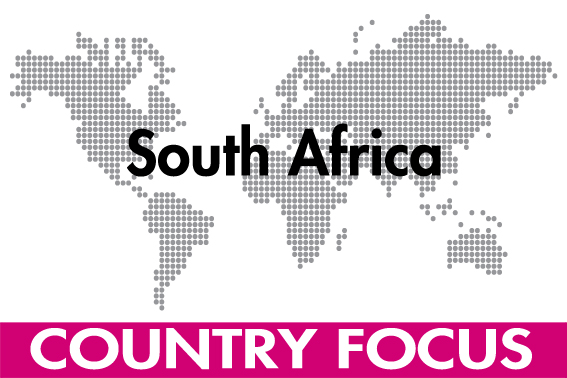
São Paulo alone consumes nearly twice South Africa’s annual pork production. However as much as that puts the size of South Africa’s pork industry into perspective, the country has good development perspectives.
Unlike the global trend, where pork is the most consumed of all meat products, the South African pork industry is tiny compared to chicken and beef markets (see Figure 1). If the South African pork industry is to grow and compete within a global context, it is necessary to understand and evaluate the value chain in its entirety.
Consumption trends
There have been significant increases in the per capita income of South African consumers over the past decade. This has led to improved living standards and increased spending power. As a result of class mobility, consumption patterns have changed and have resulted in a steady growth in meat consumption through the past decade. The increased per capita income coupled to greater population numbers and urbanisation has led to an increased per capita consumption of pork. The observed class mobility is expected to continue through the coming decade (though at a decreased rate), which may lead to further increases in the per capita consumption of pork.
Apart from increased consumption per capita, South African population numbers are also expected to increase through the coming decade, further increasing total pork consumption. The rate of population growth is however decreasing compared to the past decade. The price of various meat alternatives is a crucial factor that influences the consumers’ decision regarding meat consumption. From a pricing perspective, the greatest competitor to pork consumption is chicken, which has been the cheapest source of animal protein since 2007.
| Demand to pork is growing gradually in South Africa. This photograph shows a scene from Johannesburg. [Photo Jawsnap | Jonathan Wilson] |
Production trends
The South African Department of Agriculture, Forestry and Fisheries (DAFF) indicates that animal production contributes about 50% to the gross value of South African agricultural production, yet the contribution of the pork industry to total animal production is only 4.4%. From a global perspective, the South African pork industry contributes only 0.18% of total pork produced worldwide, rendering it an insignificant player in world markets while at the same time making it vulnerable to changes in global pork markets. Over the past decade pork production increased by an annual average of 4.5%. This is second only to broiler production which grew at an annual average of 6%. Following the international trend, production increases can be ascribed to higher slaughter weights, more so than greater slaughter numbers.
The number of pigs slaughtered from 2000 to 2012 increased by 23.6% while pork production per se increased by 69.3%. This accentuates the improvements shown in domestic farming practices. As an indefinite expansion of carcass weights is not a feasible option, further increases in production through the coming decade would have to be a result of increased sow numbers and/or further improvements in production efficiency.
Pork imports
South Africa has been a net importer of pork products since the early 1990s. Imports have increased steadily from almost 14,000 tonnes in 1994 to 33,000 tonnes in 2012. Despite its history as a net importer of pork products, the past decade has revealed an increasingly upward trend, a fact that should be of concern to the domestic industry. Imports comprised only 6% of domestic consumption in 2002 compared to 15% of domestic consumption in 2012. Imports are an important component to the South African pork market and have a fundamental role in balancing the pork market in South Africa. This is due to the fact that South Africans have a stronger preference for ribs than any other part of the pig carcass. The fact that almost no carcasses are imported is an indication that the deficit in the South African market is for specific cuts, rather than the entire pig carcasses. Pork imported to South Africa is predominantly ribs, followed by other frozen cuts, illustrating South African consumers’ preference for ribs. The bulk of the pork entering South Africa originates from the EU, with Germany, France and Spain being the countries of origin for 83% of the ribs imported to South Africa in 2012.
Exports have averaged less than 1% of domestic use over the past decade and as such are not a significant factor in the South African pork market. The main destinations for South African pork exports are to African countries like Zimbabwe, Mozambique and Angola.

| Sows waiting to be inseminated after weaning on a typical South African farm. |
The pork value chain
The South African pork supply chain is complex in structure. Varying levels of vertical integration by different companies, across different stages of the supply chain make the identification of a generic supply chain that represents the entire industry extremely difficult. It should be noted however that in many instances, a single firm operates on more than one level, with the adoption of vertically integrated structures aiding in the decreasing of the cost of supplying the final product to the market. Pork in South Africa is marketed through two distinct chains supplying either fresh pork or processed pork products onto the market.
Different classes of pork carcasses are used for different markets, with smaller and leaner porkers preferred in the fresh meat market, while heavier carcasses are supplied to the processing market. There are significant differences between the fresh meat and processed meat chains.
Input & supply
Despite the small size of the pork industry relative to other animal production sectors in South Africa, the pork industry consumed 10% of all feed produced in South Africa in 2012. Total feed consumption by the pork industry amounted to 1.11 million tonnes in 2012.
A large percentage of producers mix their own feed, a fact substantiated by André Louw, Jacques Schoeman and Mariëtte Geyser, three researchers from the University of Pretoria. In 2011, they indicated that almost 75% of South African pork producers mix their own feed. They also stated that compounded pork feed sales are concentrated in the Western Cape and KwaZulu-Natal, where key raw materials used are often not as readily available as in other areas of the country.
Breeding
Good quality genetic material is crucial to the success of the pork value chain. Pigs with good genes and favourable feed conversion ratios are more cost effective to produce and desirable carcass characteristics lead to better prices. The South African breeding industry is highly concentrated, with two breeding companies controlling 75% of the market. Topigs SA is currently holding about a 30% share and Kanhym/PIC about a 45% share. About eight stud breeders supply the remaining 25% of the market.
The genetic sector constitutes about 3,000-4,000 breeding sows, Table 2 highlights the different breeds. About 700 boars are replaced per annum. More and more producers are closing their herds and implementing semen-only replacement programmes to improve their biosecurity standards. The implementation of biosecurity compartments is further aiding the need for exporting.
Primary production
Pork production in South Africa is a relatively small industry, with a commercial sow herd of about 103,000 sows being managed by around 240 commercial producers. Again, Louw, Schoeman and Geyser have indicated that in order to be economically viable, a commercial pork producer must house at least 300 sows. The cost of specialised housing is immense however, with the capital outlay for a new piggery estimated between 25,000 and 40,000 rand (€ 1,800-2,900) per sow. Last year the costs went up even further resulting in large barriers for new producers wishing to enter the market. At the same time, the high level of asset specificity associated with the investment in modern housing facilities creates a significant barrier for those wishing to exit the industry. The specialised nature of production units means that the unit cannot readily be converted to another use, effectively meaning that once the investment has been made, the producer has no option but to produce pigs, regardless of market conditions.
The result is that in the short run, production is expected to be relatively inelastic to changes in prices. The large cost associated with modern housing facilities has resulted in many producers being unwilling or unable to invest in modern facilities, resulting in great variation in technical efficiency indicators. Modern housing facilities require large quantities of water for waste management, while electricity usage is high due to advanced environmental control within the housing facilities. Significant increases in the administered cost of electricity in the past five years, combined with increased costs of raw feed materials and more recently increases in the minimum wage rate has placed significant pressure on the profit margins of primary producers. As producers are responsible for the transport of pigs to the abattoir, they typically use their own fleet and significant increases in fuel prices in recent times have also been costly. Many producers are becoming very efficient in production standards and the 30 born alive per sow and two tonne sow targets are becoming attainable targets. Mid-2014 the price paid to the producer of about 21 rand/kg (€1.50/kg) carcass or less must make South African pork amongst the cheapest in the world.
Slaughterhouses
Abattoirs provide one of the most important links within the pork value chain, converting live animals into meat. In South Africa, abattoirs that are in the business of slaughtering pigs tend to be specialised for this purpose. Of the 485 abattoirs that exist in South Africa, only 150 of these slaughter pigs, and less than 20 of these abattoirs slaughter 98% of the pigs in South Africa. The principle barrier to entry for new abattoirs is the significant capital investment required in order to operate an abattoir. Markets require a high standard of hygiene as well as traceability and abattoirs in South Africa are required to comply with the standards set out in the Meat Safety Act of 2000. Export markets are more stringent in their requirements however and currently only five of the pork abattoirs in South Africa comply with international standards and regulations in order to be accredited for exports.
Pork carcasses are allocated to different markets based on weight. Lighter pigs are classed as porker (50-55 kg), while heavier pigs are classed as cutter (56-65 kg) followed by baconer (66-85 kg) and then heavy pigs up to 100 kg. Any pig that weighs more than 100 kg moves into the sausage category.
The South African pork market comprises about 70% baconer, sold mainly to the processed market (though some lighter baconer are sold to the fresh meat market) and 30% porkers produced solely for the fresh meat market. The average slaughter mass in South Africa is 78 kg. This average slaughter mass is below that of key pork production countries like the USA, where the average carcass mass is 87 kg. The demand for heavier pigs is increasing however, with the average slaughter weight increasing significantly in the last ten years. About 2.2 million pigs at 70.5 kg carcass mass are harvested annually to produce 155,000 tonnes of pork. Of these, 60% are processed, while 40% are sold fresh. The processing sector therefore has a significant influence on the industry as a whole.

| Growers in a finishing unit. |
Processing and retail
As mentioned, the South African pork industry has two distinct branches, with around 40% of pigs produced being sold for the fresh meat market and about 60% being sold for the processed market. When considering the further processing stage of the value chain then, a clear distinction must be made between the processor, who undertakes a substantial amount of value adding before selling the product on to the retail stage and the wholesaler, who is mainly a distributor. In some instances in the fresh meat chain, the wholesaler undertakes cutting and packing operations, but these are limited in number and more often than not, cutting and packing will also take place at abattoir level. This section focuses only on the 55% of meat sold through the processing chain. The market is dominated by Enterprise and Eskort.
The retail sector in South Africa is dominated by large supermarket chains such as Pick and Pay, Spar, Shoprite Checkers and Woolworths. The retail sector exhibits high levels of concentration, as 6% of the retail stores are responsible for 70% of food sales. Apart from these retail chain stores, other channels through which products reach the final consumer are traditional butcheries, institutional buyers and the hospitality industry. Industry experts estimate that about 50% of fresh pork products produced in South Africa is marketed through an estimated 1,500 to 2,000 traditional butcheries, while the bulk of processed products are sold through supermarkets.
Future perspectives
Demand for pork products is expected to grow in the long term. More normal weather conditions should result in decreased feed costs, providing improved conditions for pork production over the next few years. If increased demand is to be met by domestic production rather than imports however, significant investment will be required across the value chain in order to provide possible export opportunities for parts of the carcass that are less popular in South Africa, as well as the expansion of primary production.
Greater coordination, providing surety of a market as well as transparency regarding price formation will have a significant role in ensuring that the required investment occurs at primary producer level. It is said that Africa is not for the faint hearted and, given the challenging start to the agricultural year, it seems the adage may prove very true, particularly for South Africa’s farmers.
The most obvious source of upheaval for South Africa’s agriculture sector to contend with at the start of a new year has been the huge spike in maize prices, which has been made worse by low stock levels and persistent drought in the North West Province, an important maize producing area. While maize farmers may rejoice in the higher incomes they can get for their crops, it is not likely that these are going to be sustainable because the potential negatives that could still weigh on the sector and its supply chain are likely to far outweigh the short-term positives of a relatively artificial short-term price hike. For starters, the decline in the value of the rand, while good for exports, has the potential to push up input costs significantly. Also, labour unrest remains a constant threat and an unhappy workforce has the ability to severely disrupt farming production.
The good news, however, is that while many of these issues and challenges may seem out of the direct control of farmers, there is a lot they do have control of and which, if managed correctly, can ensure that their farms not only survive, but even thrive, irrespective of external forces. For most farmers in Africa, building sustainability into their farming practices goes beyond just addressing environmental risks and challenges, or maximising yields – it is a vital component in their ability to access the finance they need to keep on farming.
Finance provision is another area where sustainability considerations are taking centre stage as banks and other finance providers are looking increasingly at the sustainable actions farmers have put in place to mitigate risk and maximise production before they will even consider approving loan applications.
Written by Pieter Grimbeek, Tracy Davids, and Marieta Human
Join 18,000+ subscribers
Subscribe to our newsletter to stay updated about all the need-to-know content in the pigsector, three times a week. Beheer
Beheer

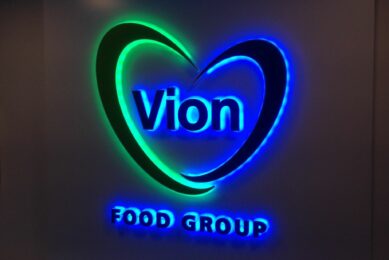
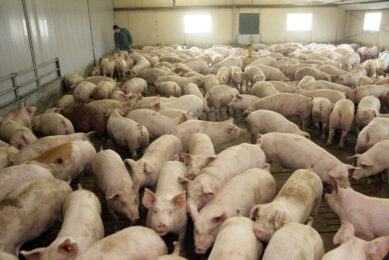
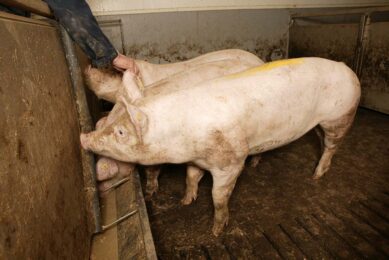
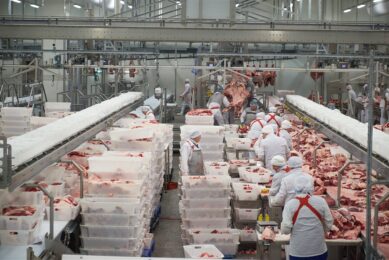





 WP Admin
WP Admin  Bewerk bericht
Bewerk bericht